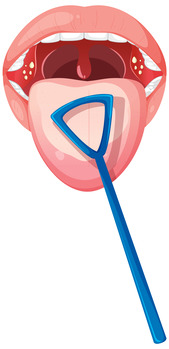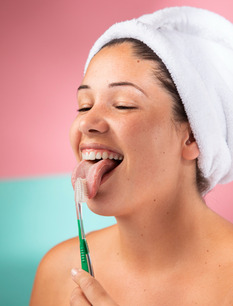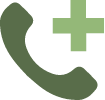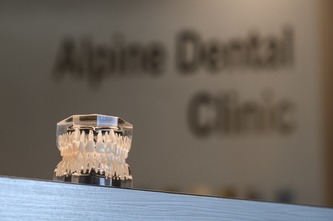Tongue Scraping: Benefits and How to Do It Properly
Maintaining excellent oral hygiene involves more than just brushing and flossing—your tongue plays a crucial role in your overall dental health. At Alpine Dental Clinic, we emphasize the importance of tongue scraping, a simple yet highly effective practice that can significantly improve oral hygiene, freshen breath, and even enhance your sense of taste.
Despite its benefits, many people overlook tongue cleaning as part of their daily routine. In this comprehensive guide, we’ll explore:
-
What tongue scraping is and how it works
-
The science-backed benefits of tongue scraping
-
Step-by-step instructions for proper technique
-
Common mistakes to avoid
-
How often you should scrape your tongue
-
Additional oral hygiene tips from Alpine Dental Clinic
By the end of this article, you’ll understand why tongue scraping should be an essential part of your dental care routine.
What Is Tongue Scraping?
Tongue scraping is the practice of using a specialized tool (a tongue scraper) to remove bacteria, food debris, dead cells, and mucus from the surface of the tongue. Unlike brushing, which primarily cleans teeth, scraping targets the coating that accumulates on the tongue, which can contribute to bad breath and other oral health issues.

Why Does the Tongue Need Cleaning?
The tongue’s rough surface contains tiny bumps (papillae) where bacteria and debris can easily accumulate. Over time, this buildup forms a white or yellowish coating, which can lead to:
-
Bad breath (halitosis) – Bacteria on the tongue produce sulfur compounds, causing unpleasant odors.
-
Plaque buildup – An unclean tongue contributes to plaque formation on teeth.
-
Reduced taste sensitivity – A coated tongue can dull your taste buds.
-
Increased risk of oral infections – Excess bacteria may contribute to gum disease and cavities.
Tongue scraping helps mechanically remove this buildup, promoting a cleaner, healthier mouth.
The Science-Backed Benefits of Tongue Scraping
Research and dental experts agree that tongue scraping offers several key benefits:
1. Eliminates Bad Breath (Halitosis)
Studies show that up to 90% of bad breath cases originate from the tongue due to bacterial buildup. While mouthwash masks odors temporarily, scraping physically removes the bacteria causing the smell.
2. Enhances Taste Perception
A coated tongue can block taste buds, making food seem less flavorful. Regular scraping clears debris, improving your ability to taste sweet, salty, sour, and bitter flavors.
3. Reduces Harmful Bacteria
The mouth contains billions of bacteria, some of which contribute to plaque, cavities, and gum disease. Scraping helps reduce these microbes, supporting healthier teeth and gums.
4. Improves Digestion
Digestion begins in the mouth with saliva and enzymes. A clean tongue stimulates saliva production, aiding in better digestion and nutrient absorption.
5. Boosts Overall Oral Hygiene
While brushing and flossing clean teeth, tongue scraping ensures complete oral hygiene by removing bacteria that brushing alone can’t eliminate.
How to Scrape Your Tongue Properly: A Step-by-Step Guide
To maximize benefits, follow these steps for effective tongue scraping:
Step 1: Choose the Right Tongue Scraper
-
Metal scrapers (copper or stainless steel) are durable and easy to clean.
-
Plastic scrapers are affordable but may need frequent replacement.
-
Avoid using toothbrushes, as they are less effective at removing debris.
Step 2: Scrape at the Right Time
-
The best time is morning before eating, as bacteria accumulate overnight.
-
You can also scrape before bedtime to reduce overnight bacterial growth.

Step 3: Proper Technique
-
Stick out your tongue as far as comfortably possible.
-
Place the scraper at the back of your tongue (but not too far to avoid gagging).
-
Gently pull forward toward the tip in one smooth motion.
-
Rinse the scraper after each pass.
-
Repeat 3-5 times, covering all areas of the tongue.
Step 4: Rinse and Clean Up
-
Swish with water or an antimicrobial mouthwash to remove loosened debris.
-
Wash the scraper with soap and water after each use.
Common Mistakes to Avoid
- Scraping too hard → Can irritate the tongue. Use gentle pressure.
- Not cleaning the scraper → Bacteria can linger on the tool. Always rinse it well.
- Skipping the back of the tongue → Most bacteria reside there—don’t neglect it!
- Using a toothbrush instead → Bristles push debris around rather than removing it.
How Often Should You Scrape Your Tongue?
For optimal results:
- Once daily (morning) for maintenance.
- Twice daily (morning and night) if you suffer from bad breath or thick coating.
To complement tongue scraping:
- Brush twice daily with fluoride toothpaste.
- Floss daily to remove plaque between teeth.
- Stay hydrated to reduce dry mouth (a breeding ground for bacteria).
- Visit your dentist regularly for professional cleanings and checkups.

Learn About Tongue Scraping at Alpine Dental Clinic
Tongue scraping is a quick, easy, and highly effective way to improve oral health. By incorporating it into your daily routine, you can enjoy fresher breath, better taste, and a healthier mouth.
If you have concerns about bad breath, gum health, or oral hygiene, our dental experts at Alpine Dental Clinic are here to help.




 Monday – Friday 8AM – 4PM
Monday – Friday 8AM – 4PM